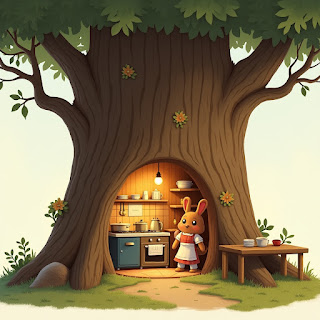How I Used to Think Animals Lived When I Was Little
How I Used to Think Animals Lived When I Was Little
As children, our imaginations were boundless, painting the world in whimsical and magical colors. One of the most enchanting ideas I held as a child was how animals lived. Inspired by fairy tales, cartoons, and storybooks, I believed that animals resided in tiny, cozy homes inside trees, complete with furniture, kitchens, and a warm fireplace.
The thought of a squirrel wearing an apron, cooking breakfast in a wooden cabin inside an old oak tree, felt completely reasonable to my young mind. I envisioned rabbits sitting around a small dining table, sipping tea, while owls had libraries filled with books about the secrets of the forest. Every tree trunk was a hidden world, and every burrow led to a secret underground city of animals going about their daily lives.
This belief wasn’t entirely unfounded. Many children’s books and animated films depicted animals with human-like characteristics. From Beatrix Potter’s beautifully illustrated tales to Disney movies showing animals in charming homes, these stories nurtured the idea that animals lived just like us—only in miniature and hidden from human eyes.
As I grew older, I learned about the real ways animals live. Squirrels build nests called dreys, rabbits dig burrows, and owls reside in hollow tree trunks. Though these homes aren’t filled with tiny furniture or kitchens, they are just as fascinating. Nature has its own remarkable way of providing shelter and comfort to animals, and understanding their true habits made me appreciate them even more.
Still, there’s something comforting about that childhood imagination. Even now, when I see a hollow tree or a small opening in the ground, I can’t help but smile and wonder—what if, just maybe, there’s a little squirrel chef in there making breakfast?
My imagination












Comments
Post a Comment